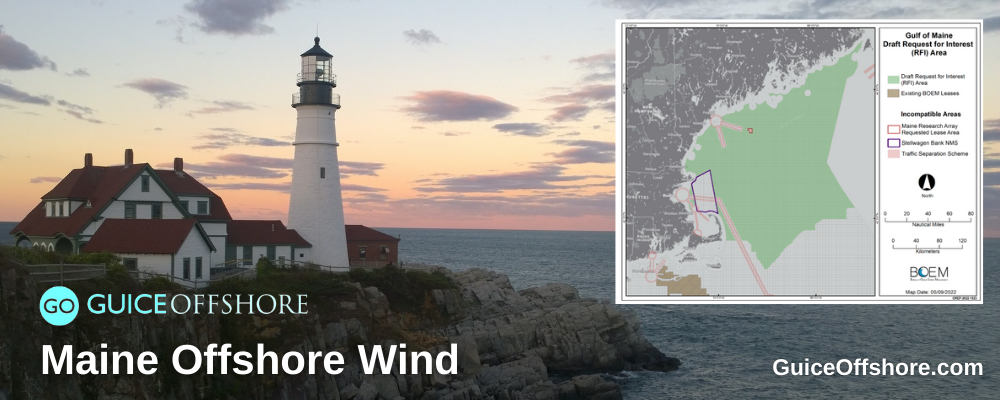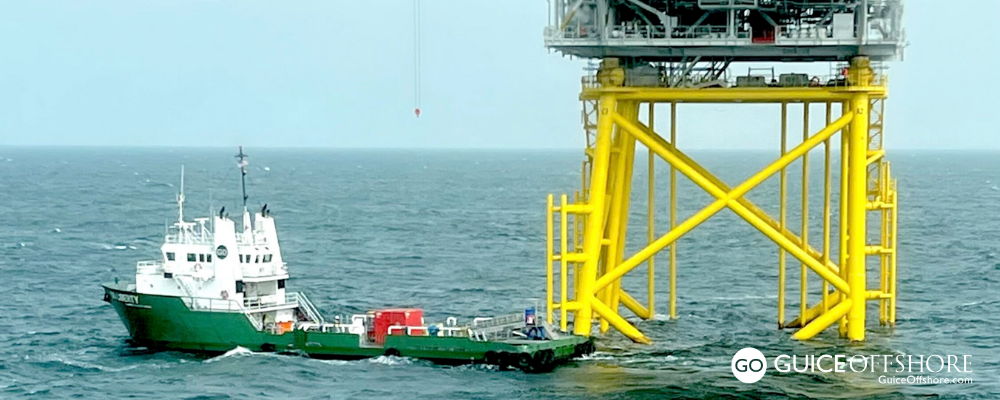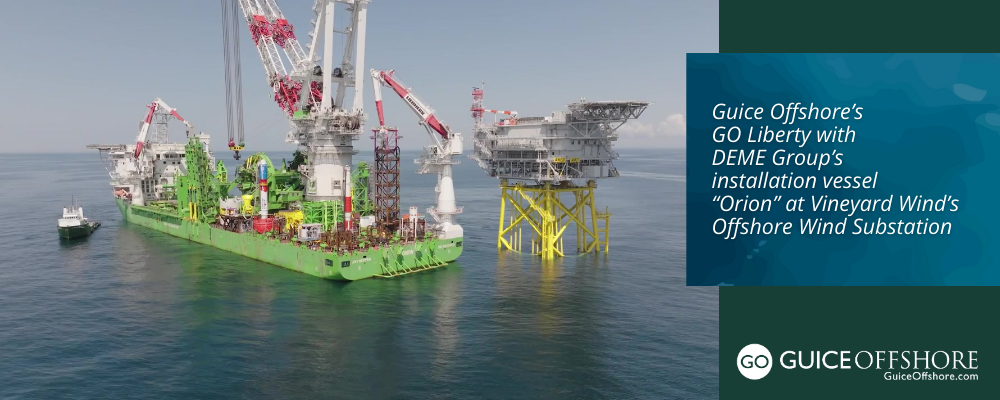Planning for Gulf of Maine offshore wind energy will take concrete steps this week with a day-long meeting of the Intergovernmental Renewable Energy Task Force (Task Force) for the Gulf of Maine on Thursday, May 19, 2022.
The proceedings are open to the public. To register, click here.
Established by the U.S. Bureau of Ocean Energy Management (BOEM) in 2019 at the request of New Hampshire Governor Christopher Sununu, the Task Force is designed to address the regional nature of offshore wind energy development by representing both federal officials and elected Tribal, state and local officials from Maine, New Hampshire and Massachusetts.
For the past few years, Guice Offshore vessels have been working in the northeastern United States helping offshore wind energy providers with ocean floor surveying and other subsea activities.
In addition to time reserved for public input, this week’s May 19 meeting will focus on the following topics:
- Commercial planning process for wind energy leasing in federal waters of the Gulf of Maine
- State and federal perspectives on offshore wind in the Gulf of Maine
- Framework approach for the first step in the commercial planning process – a Request for Interest (RFI)
- Stakeholder engagement approach for the commercial planning process
- State of Maine’s research lease application
The BOEM’s offshore wind leasing strategy for 2021-2025 includes the goal of holding a commercial lease sale within the Gulf of Maine in 2024. To achieve this, the BOEM has decided to begin the process with the RFI, which will allow the agency to gauge commercial interest in offshore wind development in the Gulf of Maine, while also maximizing the opportunity for the public to engage and provide input. The Task Force will review the draft RFI at this week’s meeting.
The RFI explains the spatial extent of the proposed Gulf of Maine leasing area, as well as outlines the data and information the BOEM will seek from the public to inform subsequent analyses in the planning and leasing process (e.g., call area, wind energy areas).
The proposed lease area is roughly bounded on the west, north and east by the BOEM’s jurisdiction for renewable energy activities on the outer continental shelf, ranging three nautical miles from the shore to the Exclusive Economic Zone.
The BOEM delineated the southern boundary of the proposed leasing area by looking at the physiographic, oceanographic and biotic variables that together uniquely define the Gulf of Maine, while avoids any overlap with the Planning Area used for the previous Massachusetts/Rhode Island planning and leasing process.
Next, the BOEM seeks to refine the Planning Area to determine the extent of the RFI Area. This involves removing areas that are incompatible with offshore wind energy development. incompatible areas like national parks and sanctuaries, or internationally recognized navigation measures. To view a list of other potentially incompatible areas, click here.
To view the complete meeting agenda, click here.
To go to the BOEM Maine activities page, which includes links to the 2019 Task Force meeting, click here.



